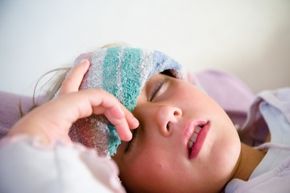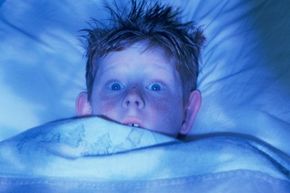A snake slides down the static screen of a TV in a dark room. Where are you? How did you get here? Why are you sweating? You can see the dim outlines of an armchair, a sofa, a window with the curtains drawn against the light of a streetlamp outside. Nothing looks familiar. Suddenly the room expands infinitely, then suddenly contracts around you, like the garbage compactor in "Star Wars". There's no way out. You're going to be crushed alive.
Thousands of enormous spiders lower themselves slowly on threads, preparing to vacuum out your innards. A voice booms through the walls announcing your imminent demise. It's your own voice. You crouch in the fetal position preparing for the end, conscious of how hot and uncomfortable you are.
Advertisement
At the last second, just as the walls, spiders and voice close in around you, you notice a tiny door. You kick it open and crawl out. But there's no relief. Outside is just as bad and just as hot. You have to run — people are after you. Everyone's after you. Why? What have you done?
Trust no one. Everybody you know has turned into zombie butterflies with dripping fangs. They're everywhere. They're flapping horribly in your wake, getting closer and closer with their brilliant, floppy wings. One lands on your head and looks down at you. It has your face. Then the others pile on. They've caught you! They're eating you alive!
Fever dreams are the worst.
Not only do you end up alternately sweating and shivering, but you can't even get any rest because whenever you go to sleep, you end up in some bizarre nightmare dimension featuring monsters, warped space-time and fear, fear, fear.
Why do our bodies do this to us? Because fever dreams are the unfortunate collision of two complex body processes — namely, fevers and dreams.
Advertisement







